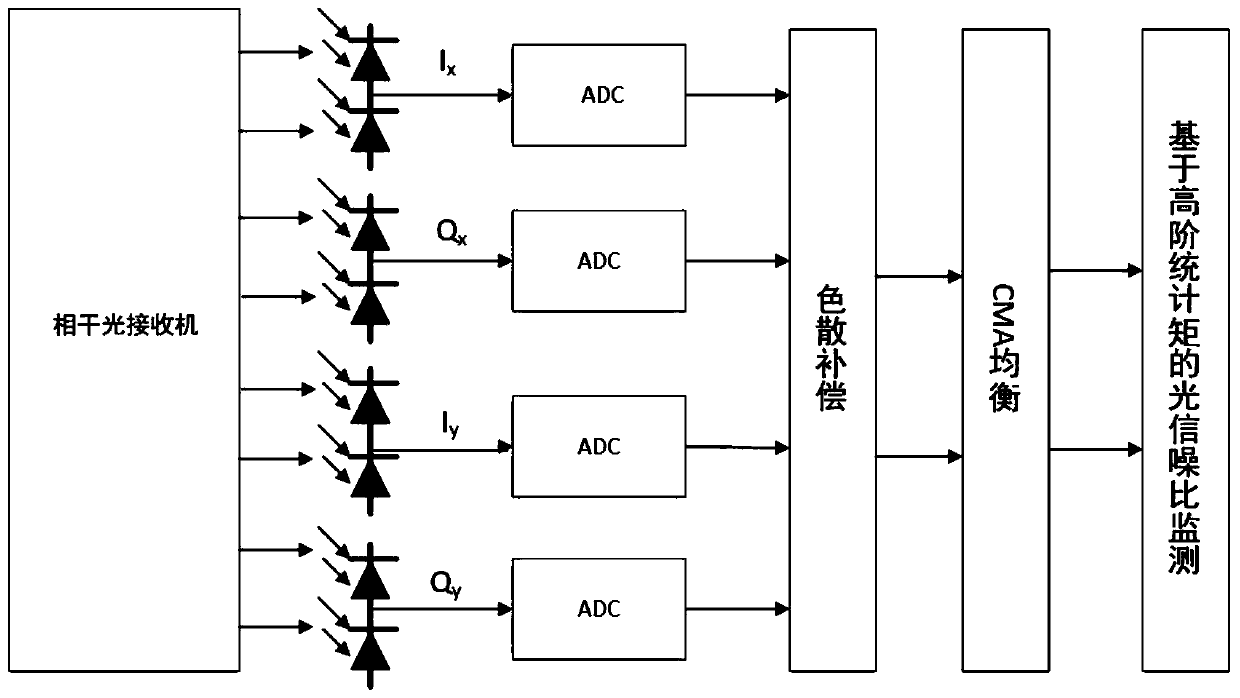Coherent light communication system optical signal-to-noise ratio monitoring method based on high-order statistical moment
A technology of coherent optical communication and optical signal-to-noise ratio, applied in transmission systems, electromagnetic wave transmission systems, electrical components, etc., can solve problems such as bottlenecks in communication rates
- Summary
- Abstract
- Description
- Claims
- Application Information
AI Technical Summary
Problems solved by technology
Method used
Image
Examples
Embodiment Construction
[0025] The present invention will be further described below in conjunction with the accompanying drawings and specific embodiments, so that those skilled in the art can better understand the present invention and implement it, but the examples given are not intended to limit the present invention.
[0026] The high-order statistical moment method calculates the second-order moment and fourth-order moment of the signal received by the coherent receiving system, and then calculates the signal power and noise power based on them. For example, in the PM-QPSK coherent receiving system, the signal to be tested is received coherently at the receiving end, and then after sampling, CD compensation and polarization demultiplexing, two polarization states of X and Y are obtained. After the CMA adaptive equalizer, the carrier frequency Before offset compensation and carrier phase recovery, the signal is imported into the optical signal-to-noise ratio monitoring module for processing.
[...
PUM
 Login to View More
Login to View More Abstract
Description
Claims
Application Information
 Login to View More
Login to View More - R&D
- Intellectual Property
- Life Sciences
- Materials
- Tech Scout
- Unparalleled Data Quality
- Higher Quality Content
- 60% Fewer Hallucinations
Browse by: Latest US Patents, China's latest patents, Technical Efficacy Thesaurus, Application Domain, Technology Topic, Popular Technical Reports.
© 2025 PatSnap. All rights reserved.Legal|Privacy policy|Modern Slavery Act Transparency Statement|Sitemap|About US| Contact US: help@patsnap.com



